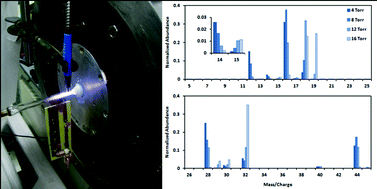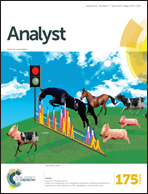Plasma ionization under simulated ambient Mars conditions for quantification of methane by mass spectrometry
Abstract
Ambient ionization techniques enable ion production in the native sample environment for mass spectrometry, without a need for sample preparation or separation. These techniques provide superior advantages over conventional ionization methods and are well developed and investigated for various analytical applications. However, employing ambient ionization techniques for in situ extra-terrestrial chemical analysis requires these techniques to be designed and developed according to the ambient conditions of extra-terrestrial environments, which substantially differ from the ambient conditions of Earth. Here, we report a plasma ionization source produced under simulated ambient Mars conditions for mass spectrometry. The plasma ionization source was coupled to a quadrupole mass spectrometer, and quantitative and qualitative analyses of trace amounts of methane, as an analyte of interest in Mars discovery missions, were demonstrated. The miniature plasma source was operational at a net power as low as ∼1.7 W in the pressure range of 4–16 Torr. A detection limit as low as ∼0.15 ppm (v/v) at 16 Torr for methane was demonstrated.


 Please wait while we load your content...
Please wait while we load your content...